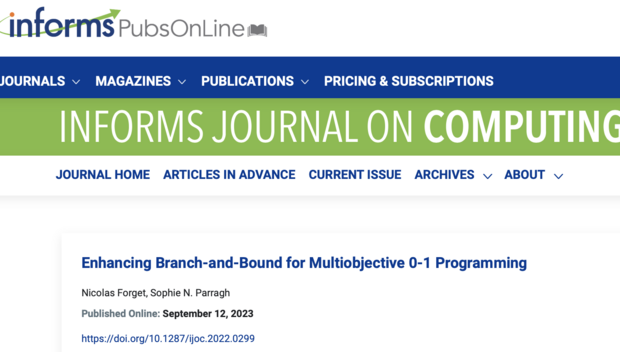Neues Paper im INFORMS Journal on Computing (VHB A)
Seit 12. September ist das Paper "Enhancing Branch-and-Bound for Multiobjective 0-1 Programming" von Nicolas Forget und Sophie N. Parragh online verfügbar.

Abstract: In the biobjective branch-and-bound literature, a key ingredient is objective branching, that is, to create smaller and disjoint subproblems in the objective space, obtained from the partial dominance of the lower bound set by the upper bound set. When considering three or more objective functions, however, applying objective branching becomes more complex, and its benefit has so far been unclear. In this paper, we investigate several ingredients that allow us to better exploit objective branching in a multiobjective setting. We extend the idea of probing to multiple objectives for the 0-1 case, enhance it in several ways, and show that, when coupled with objective branching, it results in significant speedups in terms of CPU times. We also show how to adapt it to the general integer case. Furthermore, we investigate cut generation based on the objective branching constraints. Besides, we generalize the best bound idea for node selection to multiple objectives, and we show that the proposed rules outperform, in the multiobjective literature, the commonly employed depth-first and breadth-first strategies. We also analyze problem-specific branching rules. We test the proposed ideas on available benchmark instances for three problem classes with three and four objectives, namely, the capacitated facility location problem, the uncapacitated facility location problem, and the knapsack problem. Our enhanced multiobjective branch-and-bound algorithm outperforms the best existing branch-and-bound–based approach and is the first to obtain competitive and even slightly better results than a state-of-the-art objective space search method on a subset of the problem classes.
doi: https://doi.org/10.1287/ijoc.2022.0299, öffnet eine externe URL in einem neuen Fenster
